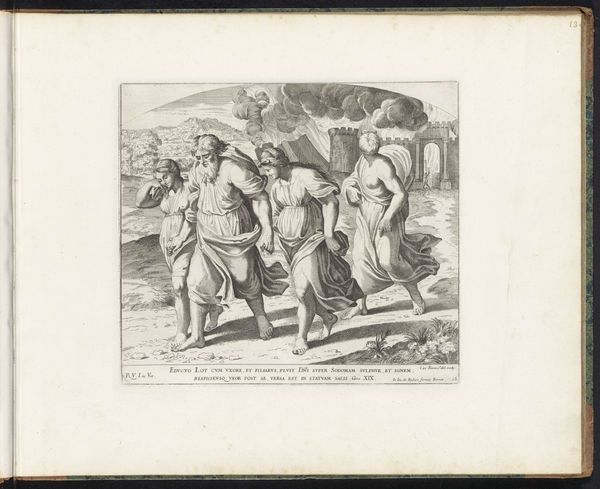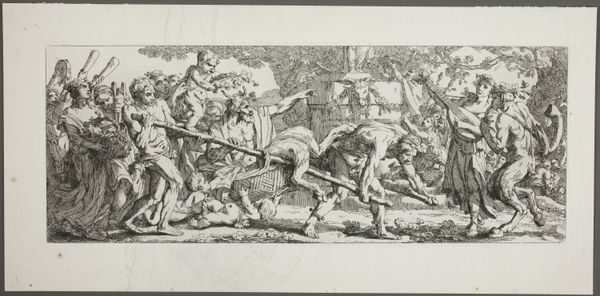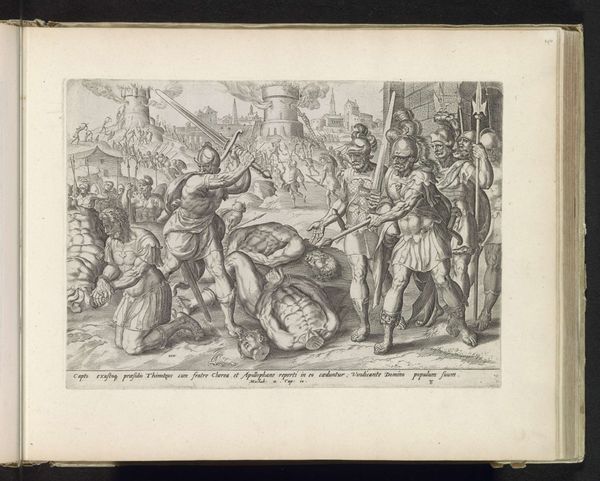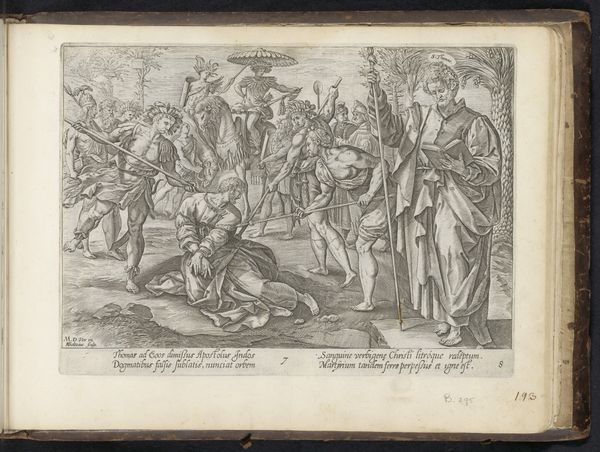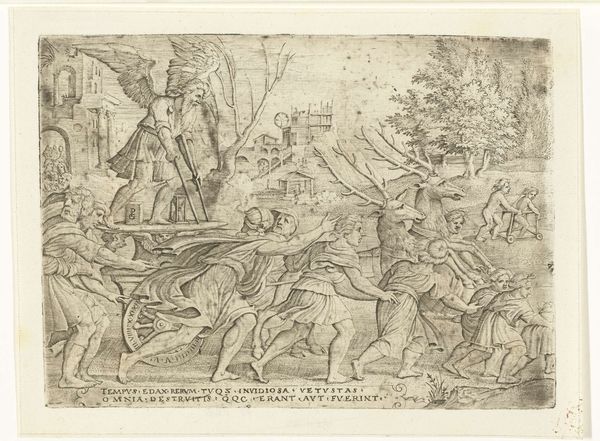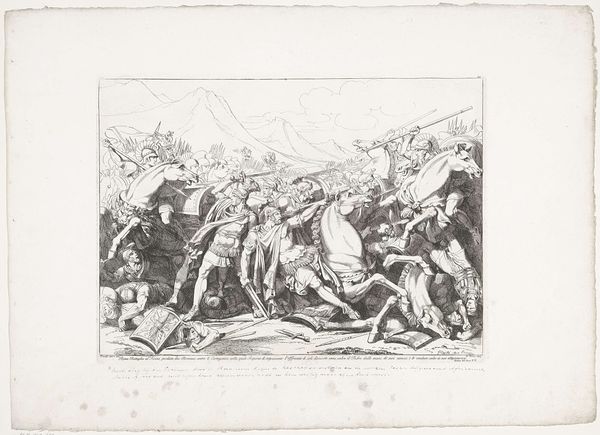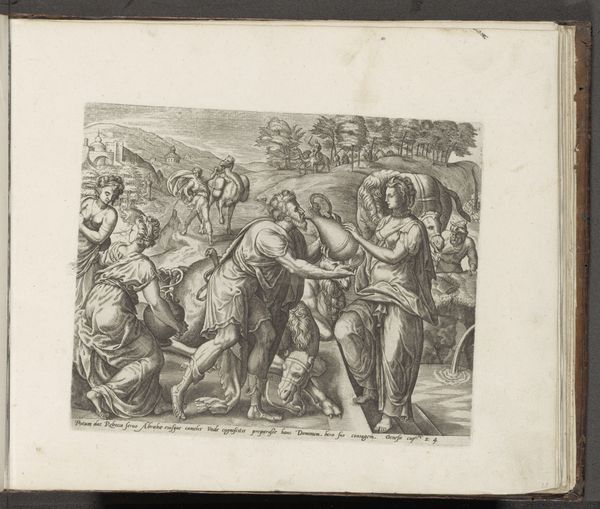
drawing, print, ink, engraving
#
drawing
#
narrative-art
#
baroque
#
pen drawing
# print
#
figuration
#
ink
#
history-painting
#
engraving
Dimensions: height 242 mm, width 290 mm
Copyright: Rijks Museum: Open Domain
Pietro Aquila made this print, "David onthoofdt Goliat", around the late 17th century, using the intaglio technique. Intaglio is a printmaking process where the image is incised into a metal plate, usually copper. The artist would have used tools to cut lines into the plate, creating a network of grooves that hold ink. To make a print, the entire plate is inked, then wiped clean, leaving ink only in the incised lines. Damp paper is then pressed against the plate, and the pressure forces the paper into the inked grooves, transferring the image. Consider the labor involved in creating this image. The fine lines and details required a great deal of time, skill and precision to engrave the plate. The quality of the print, with its tonal variations and sharp details, speaks to Aquila’s mastery of the intaglio process. The finished print, a multiple, could then be widely distributed. By attending to the material and processes involved in its making, we can appreciate the skill and labor embedded in this image, challenging traditional hierarchies between art and craft.
Comments
No comments
Be the first to comment and join the conversation on the ultimate creative platform.


